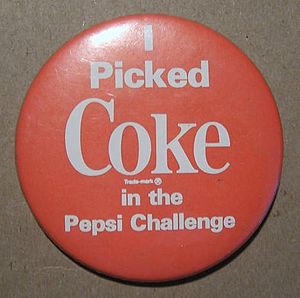 Image via WikipediaJan. 15 is the 122nd anniversary of the Coca-Cola Company, which is a perfectly good excuse for recycling an old Geek Trivia column rather than writing a new Truly Trivial for this blog. Thus:
Image via WikipediaJan. 15 is the 122nd anniversary of the Coca-Cola Company, which is a perfectly good excuse for recycling an old Geek Trivia column rather than writing a new Truly Trivial for this blog. Thus:The Coca-Cola Company took one of greatest media shellackings in history when New Coke debuted on April 23, 1985. The American consumer considered Coca-Cola a cultural icon that was above revision, so Coca-Cola Classic was released on July 10, 1985 (less than three months after being discontinued)...The answer is right here.
Problem is, the Coca-Cola Classic that was released after the New Coke fiasco wasn’t the same as the Coca-Cola released before New Coke. The “logic” behind New Coke was two-fold: First, to make the drink sweeter in order to compete with sweeter-tasting rival drink Pepsi; second, to switch all domestic Coca-Cola bottlers from cane sugar to the cheaper high-fructose corn syrup sweeteners. When Coca-Cola Classic came back on the market, it too was made with corn syrup rather than sugar.
And that was far from the only change to the Coke formula over the years. In 1935, the formula was tweaked to be certified kosher. Moreover, John Pemberton, inventor of Coca-Cola, actually sold several different versions of the formula to different buyers — and that was after he had converted it to a carbonated drink, rather than its original alcoholic cocawine formulation.
One ingredient unique to American Coca-Cola is still used — after a fashion — in the formulation. Coca-Cola can rightly claim this additive as a brand differentiator, as it has received special dispensation from the U.S. government to be the sole American corporation to employ this ingredient in a consumer beverage.
WHAT INGREDIENT HAS THE U.S. GOVERNMENT GIVEN COCA-COLA SOLE AND UNIQUE PERMISSION TO USE IN CONSUMER BEVERAGES?

No comments:
Post a Comment